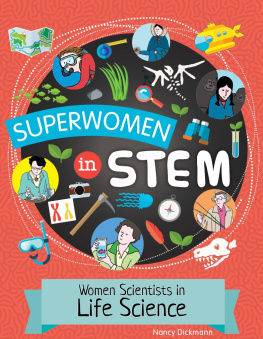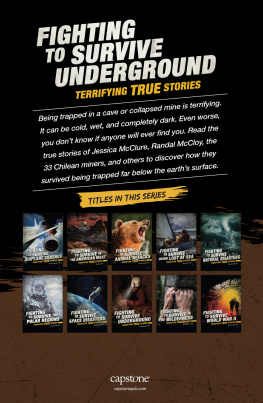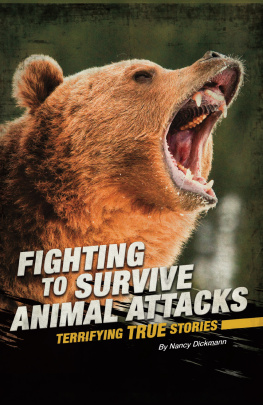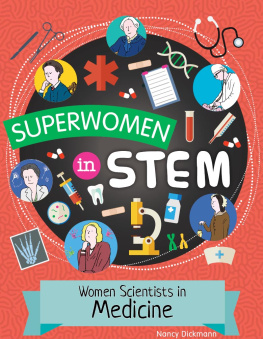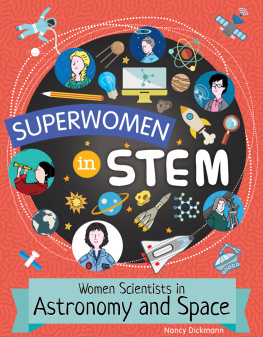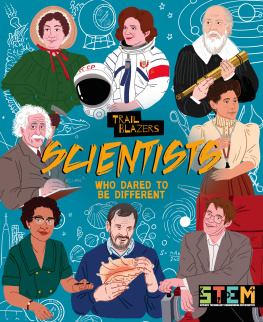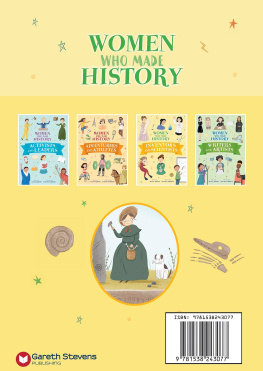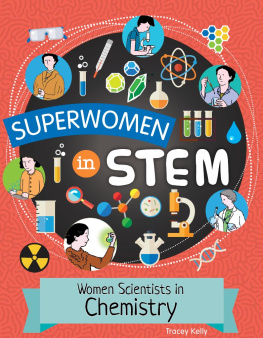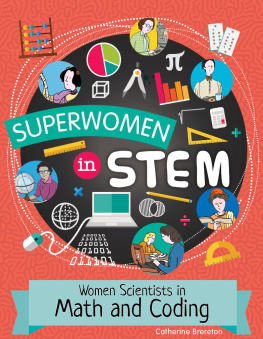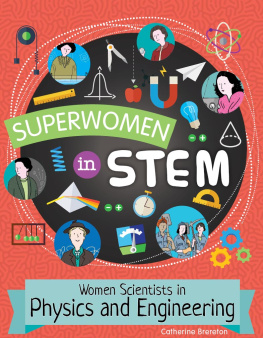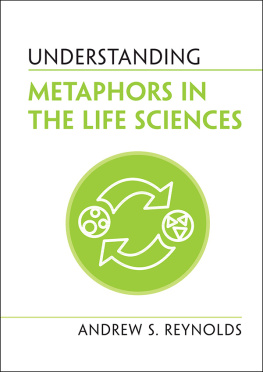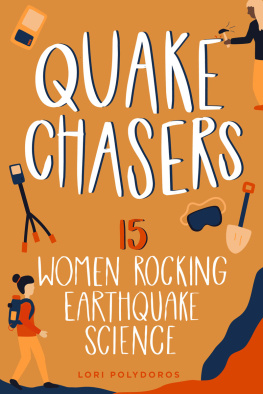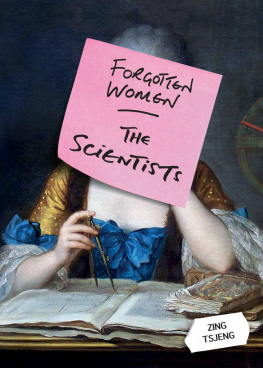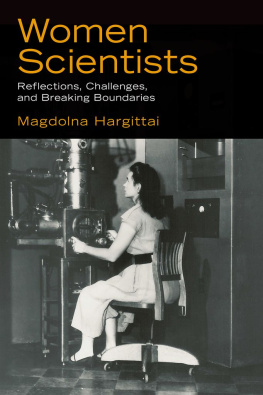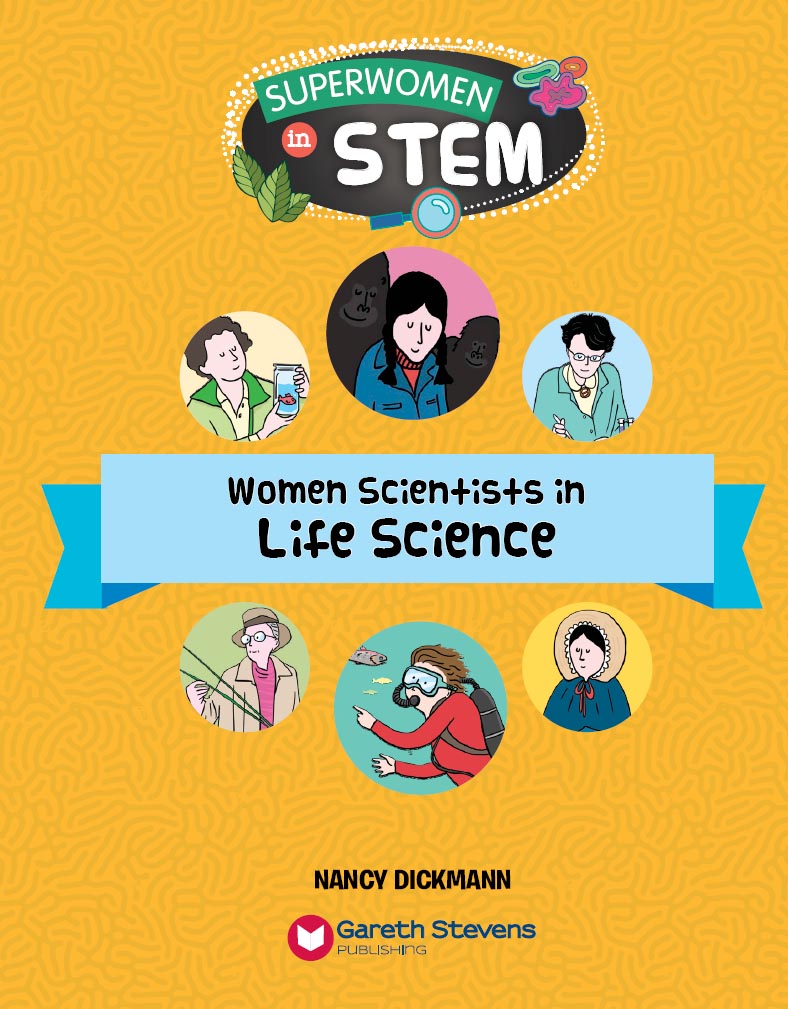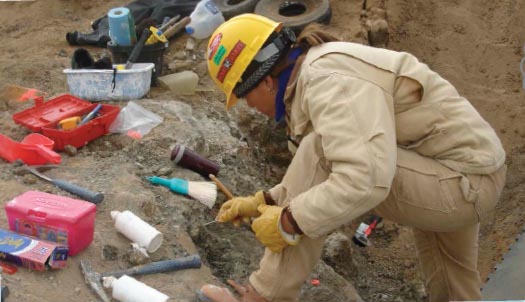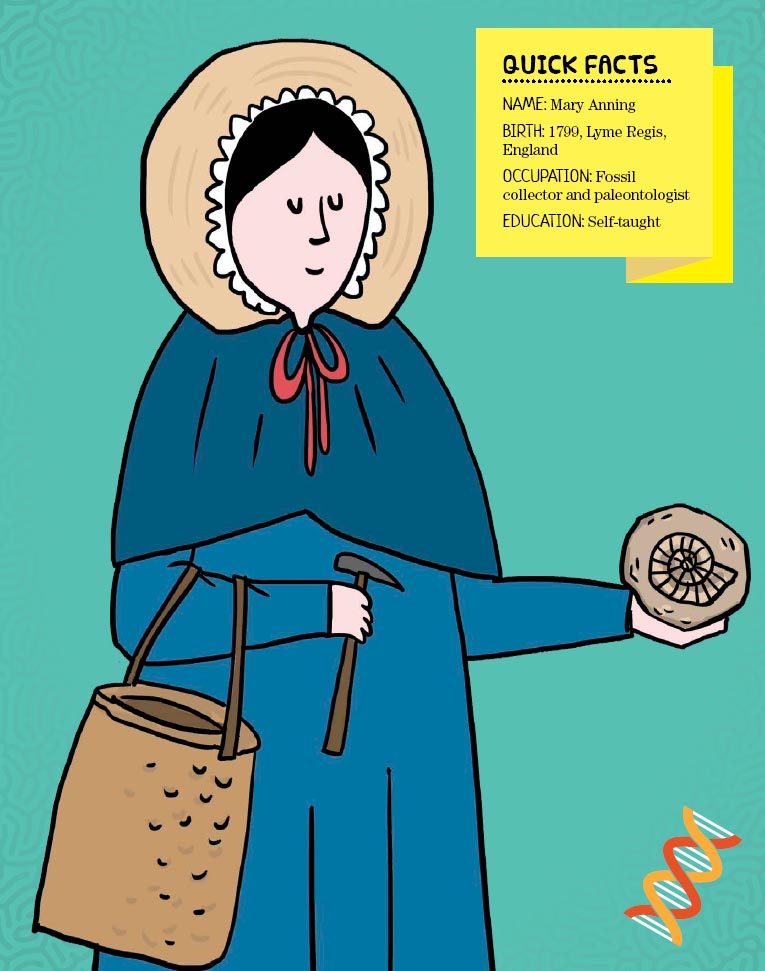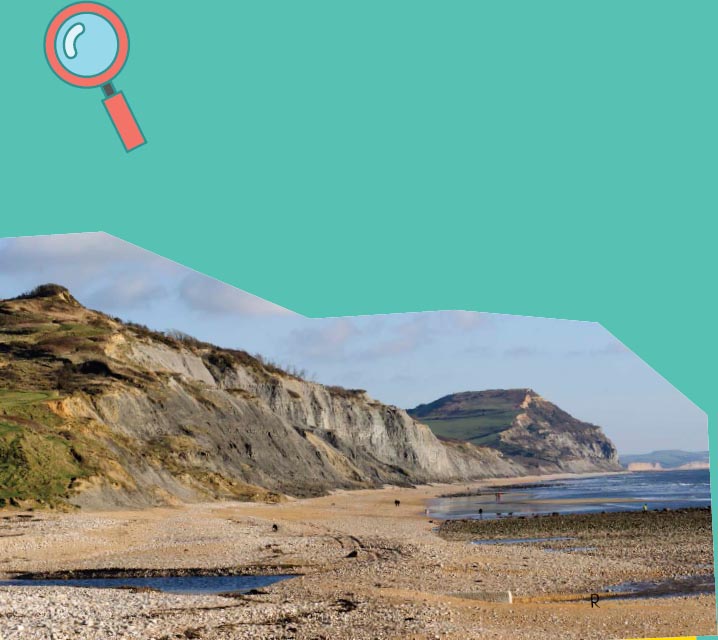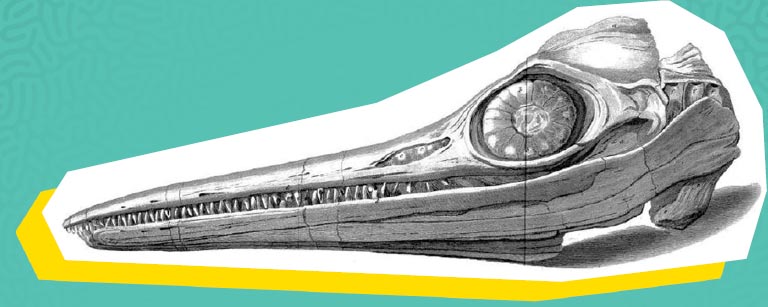Please visit our website, www.garethstevens.com.
For a free color catalog of all our high-quality books,
call toll-free 1-800-542-2595 or fax 1-877-542-2596.
Cataloging-in-Publication Data
Names: Dickmann, Nancy.
Title: Women scientists in life science / Nancy Dickmann.
Description: New York : Gareth Stevens Publishing, 2018. | Series: Superwomen in STEM | Includes index. Identifiers: LCCN ISBN 9781538214718 (pbk.) | ISBN 9781538214060 (library bound) | ISBN 9781538214725 (6 pack) Subjects: LCSH: Women in science--Juvenile literature. | Women scientists--Juvenile literature.
Classification: LCC Q130.D53 2018 | DDC 305.435--dc23
Published in 2018 by
Gareth Stevens Publishing
111 East 14th Street, Suite 349
New York, NY 10003
Copyright 2018 Brown Bear Books Ltd
For Brown Bear Books Ltd:
Text and Editor: Nancy Dickmann
Designer and Illustrator: Supriya Sahai
Editorial Director: Lindsey Lowe
Childrens Publisher: Anne ODaly
Design Manager: Keith Davis
Picture Manager: Sophie Mortimer
Concept development: Square and Circus / Brown Bear Books Ltd
Picture Credits: Cover: Illustrations of women: Supriya Sahai. All icons Shutterstock. Alamy: ClassicStock .
Character artwork Supriya Sahai
All other artwork Brown Bear Books Ltd
Brown Bear Books has made every attempt to contact the copyright holders. If anyone has any information please contact
All rights reserved. No part of this book may be reproduced in any form without permission in writing from the copyright holder, except by a reviewer.
Manufactured in the United States of America
CPSIA compliance information: Batch #CW18GS. For further information contact Gareth Stevens, New York, New York at 1-800-542-2595.
Contents
The Science of Life
Mary Anning
Marjory Stoneman Douglas
Barbara McClintock
Rachel Carson
Dian Fossey
Sylvia Earle
Timeline
Gallery
Science Now
Glossary
Further Resources
Index
The Science of Life
From thick forests to the ocean depths, living things are everywhere. Scientists have made amazing discoveries about how life began, and how it has changed over time.
T he study of life sciences is divided into many branches. Zoologists study animals, while botanists study plants. Paleontologists study living things that died out many thousands of years ago. Some scientists focus on particular aspects of life, such as the geneticists who study the way that traits are passed down from parents to offspring.
Studying the remains of extinct animals helps us to understand how living things change over time.
Today, girls and women are able to study whatever subjects they want.
PUTtING iT ALl TOgEtHeR
Living things exist in ecosystems networks of plants and animals that are dependent on each other. If one species declines, others in the ecosystem can be affected. In recent years, scientists have realized how important this balance is. Dedicated scientists study the effects of change on ecosystems, and conservationists work to protect the natural world.
MAKING THEIR MArK
For many years, women had to fight to be recognized as scientists. They were not allowed to study at universities, and were not expected to be interested in science. However, many women began to study the natural world as a hobby. They made observations, researched the work of other scientists, and drew their own conclusions. Although it often took years for them to be taken seriously, these trailblazers paved the way for a new generation of women scientists. Today, many of the worlds top scientists are women.
Mary Anning
 Mary Anning came from humble beginnings, but she made discoveries that helped some of the worlds greatest scientists prove their theories.
Mary Anning came from humble beginnings, but she made discoveries that helped some of the worlds greatest scientists prove their theories.
M ary was one of ten children born to Richard and Molly Anning in the town of Lyme Regis. Richard worked making furniture, but the family was poor. Most of Marys siblings died young only she and her brother Joseph survived to adulthood. In fact, Mary almost didnt make it. One day while she was still a toddler, a neighbor took Mary to watch a horse show. They took shelter under a tree with two other women during a storm. Suddenly lightning struck the tree, killing all three adults, but little Mary survived.
SElLING CURIOS
Lyme Regis is on the southern coast of England, and its cliffs date back to the Jurassic period. As the cliffs wore away and collapsed, fossils were revealed. Richard Anning earned extra money for his family by finding fossils and selling them to tourists, who called them curios. He taught Mary how to find and clean fossils for sale. When Richard died in 1810, Mary and Joseph tried to support the family by hunting for fossils.
ICHThYOSAUR
In 1811, Joseph found a 4-foot (1.2 m) long skull of a crocodile-like creature. A few months later, Mary uncovered the rest of the skeleton. At the age of 12, she had discovered the most complete ichthyosaur ever found. It was later displayed in a museum.
The cliffs at Lyme Regis are still a popular spot for fossil hunters.
Drawings of the Annings ichthyosaur skull were published in scientific works.
A scientist wrote a paper about it, but he gave the Annings no credit. Science was seen as something for the upper classes, not for uneducated fossil hunters like Mary.
Mary and her fossil business became well-known. She is the subject of the famous tongue twister She sells seashells by the seashore.
CHANGIng iDEAS
In the early 1800s, most people in England still believed in the version of history provided by the Bible, which implied that the planet was only a few thousand years old. They believed that living things had not changed during this time. Discoveries like Marys ichthyosaur challenged this belief. The creatures were obviously like nothing that existed on Earth. Could Earth be older than everyone thought?
MORE FINDS
Mary had become friends with an older woman, Elizabeth Philpot, who went fossil hunting with her. It could be dangerous work one day a sudden landslide killed Marys dog, and almost killed Mary too.
She says the world has used her ill... these men of learning have sucked her brains, and made a great deal of publishing works, of which she furnished the contents, while she derived [gained] none of the advantages.
A friend of Mary Anning
A GROWING REPUTAtION
Mary continued to find impressive fossils, and her reputation spread. In 1823 she discovered the first complete skeleton of a plesiosaurus. Five years later, she found a type of winged reptile called a pterosaur the first one ever found in England. Despite these finds, she and her family remained poor.

